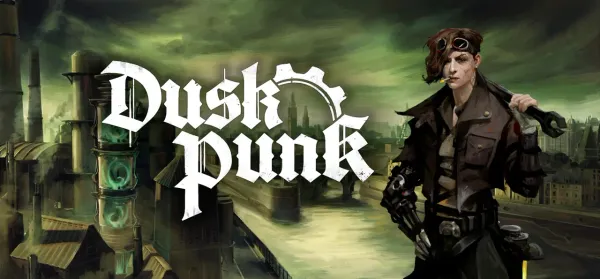In Dead Take, the hardest puzzle is your mind
Dead Take, a horror escape room game made by Surgent Studios, is, ostensibly, a game about acting. Sure, it’s a puzzle house meant for solving, but each room is equal part modern architecture and Greek tragedy metaphor. Each chapter of the game revolves around you solving puzzles, then returning to the home’s theater and watching FMV clips of the game’s cast slowly unravel or hand out a 4-digit door code. Even after finishing the game, I can’t say I fully understand what the plot is, but I can tell you it’s bad news for everyone involved. There’s jealousy, nepotism, tragic loss, and unending grief…and that’s all before you find your first blood-soaked note.
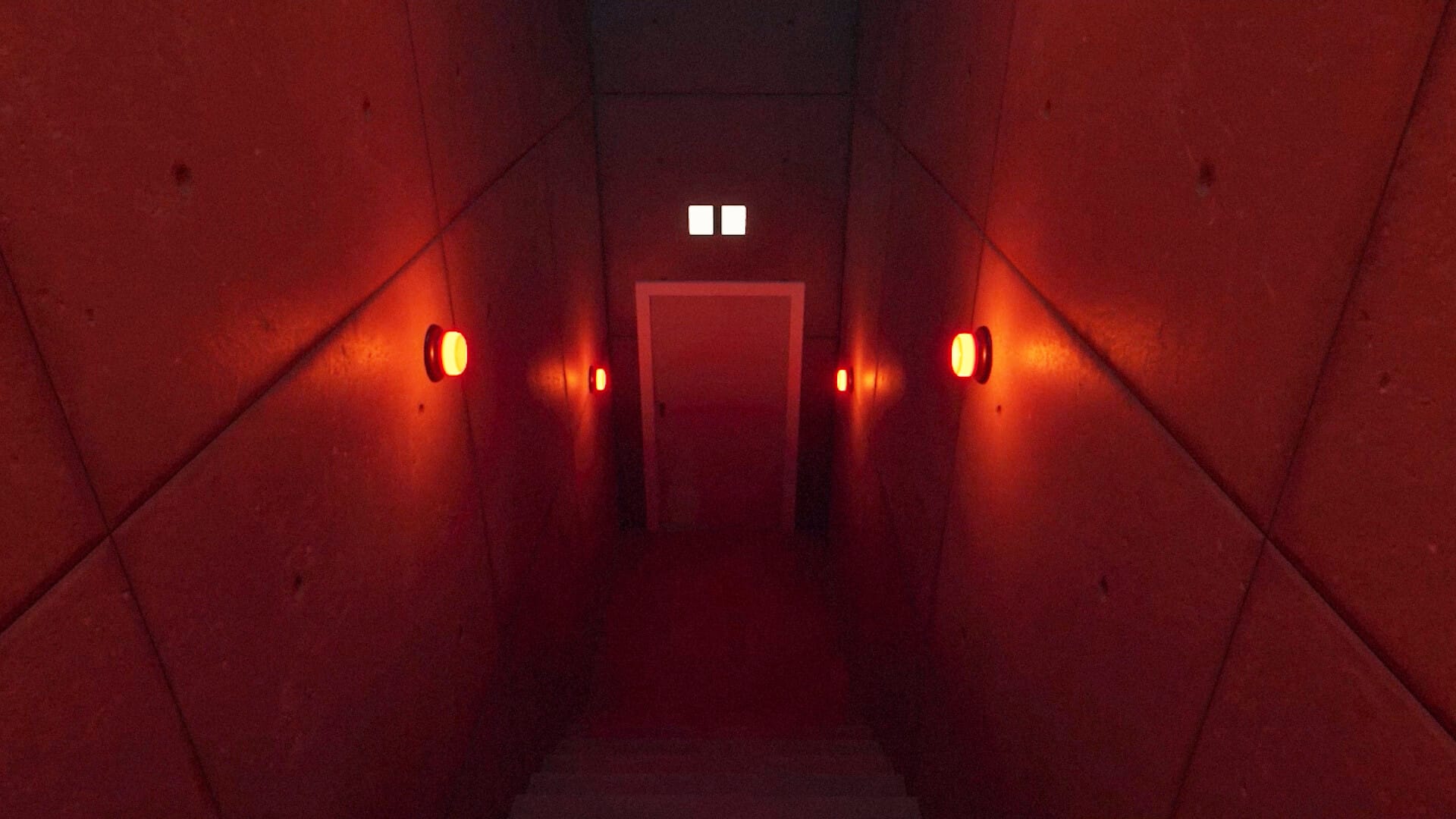
The game has some of the most prominent names in games, including Ben Starr, Neil Newbon, Laura Bailey, Alanah Pearce, Matthew Mercer, Sam Lake, and a few others. The full-motion video is some of the best I’ve seen in a while, and, since you’re rewatching interviews, video calls, or auditions, Dead Take avoids a lot of the awkward action parts that make FMV games feel campy or silly. There’s one particularly chilling clip featuring Ben Starr that is the most quietly terrifying part of the game.
You play as Chase Lowry (Neil Newbon), a down-on-his-luck actor trying to get the lead part in Duke Cain’s magnum opus, The Last Voyage. Cain is an elusive kingmaker, running his production studio like a mob boss, but to Chase, a chance to put his name in lights after all he’s sacrificed is worth it. There’s just one problem: Cain already has his leading man, son of legendary Hollywood product, Vinny Monroe (played by Ben Starr).
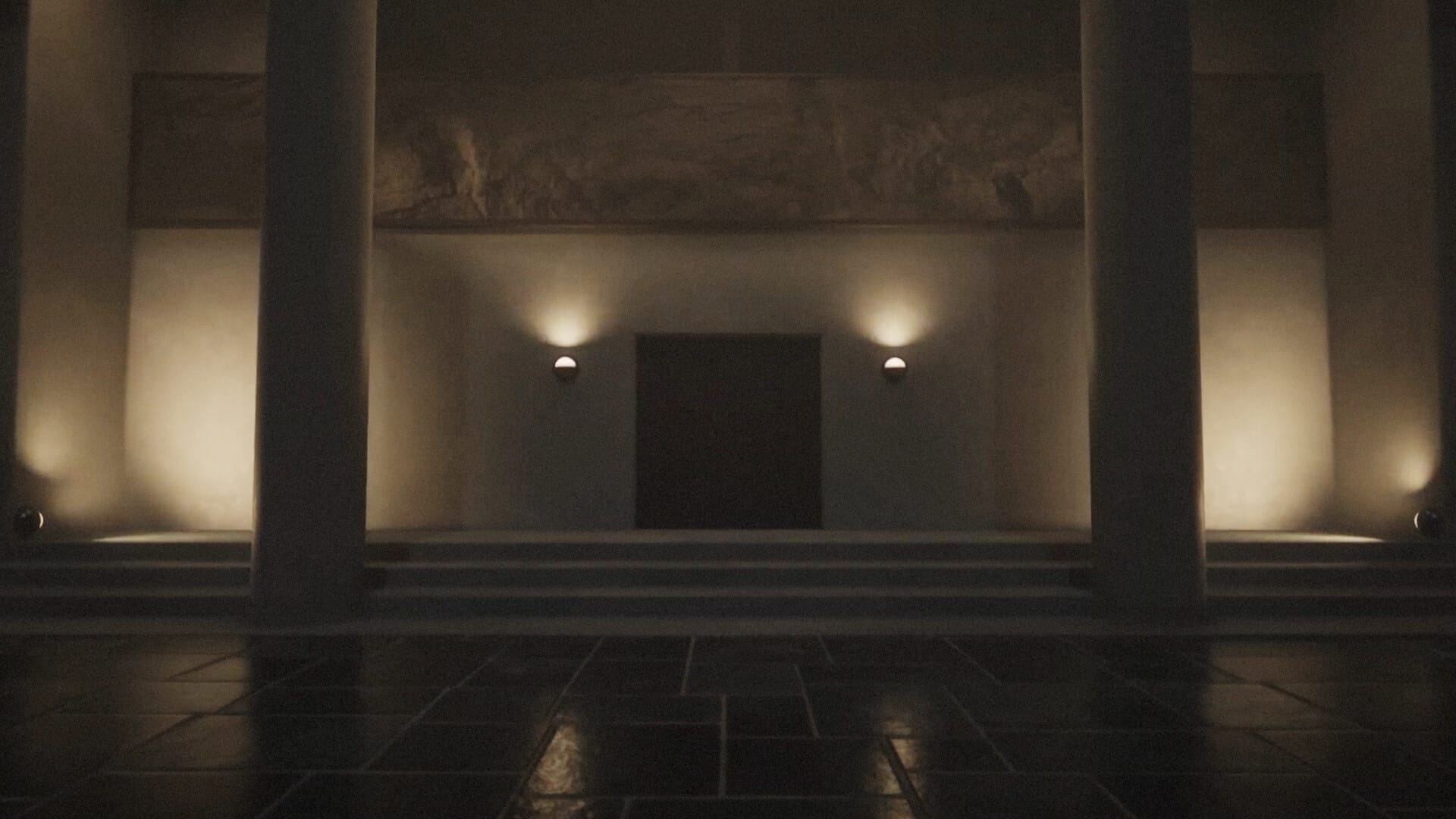
You begin Dead Take at the gate to Cain’s palatial modern estate, The Mind Palace, and do what you’ll do for the next 4-5 hours: read some notes, pick up a few items, and solve some puzzles. As the player, it’s not quite clear what is supposed to be happening at the beginning: are you breaking in, or, based on some enigmatic messages you receive, are you being tested by Cain? As you navigate the mansion, you’ll unlock keypads, find missing pieces to gizmos, and generally walk around a spooky house that seems too spooky to be a home someone lives in. Which is, kinda the point. Almost the entire runtime of Dead Take, it was achingly clear that this was an escape room.
The advantage of a real-life escape room is that you never sit back and think, “it sure is odd how many of these doors have keys with corresponding symbols on them.” An escape room is, explicitly, a puzzle you willingly enter with the sole purpose of solving, informing the aesthetics of the space. The aesthetics range from the chintzy, pun-laden spines of blank books to the overt laser-based puzzles (who has a mirror puzzle in the house? Not me). The same could be said of a haunted house: even the most realistic, horrifying haunted houses require a ticket. They require premeditation. Which is why when you begin Dead Take, it’s hard to take the story all that seriously. At least at first.
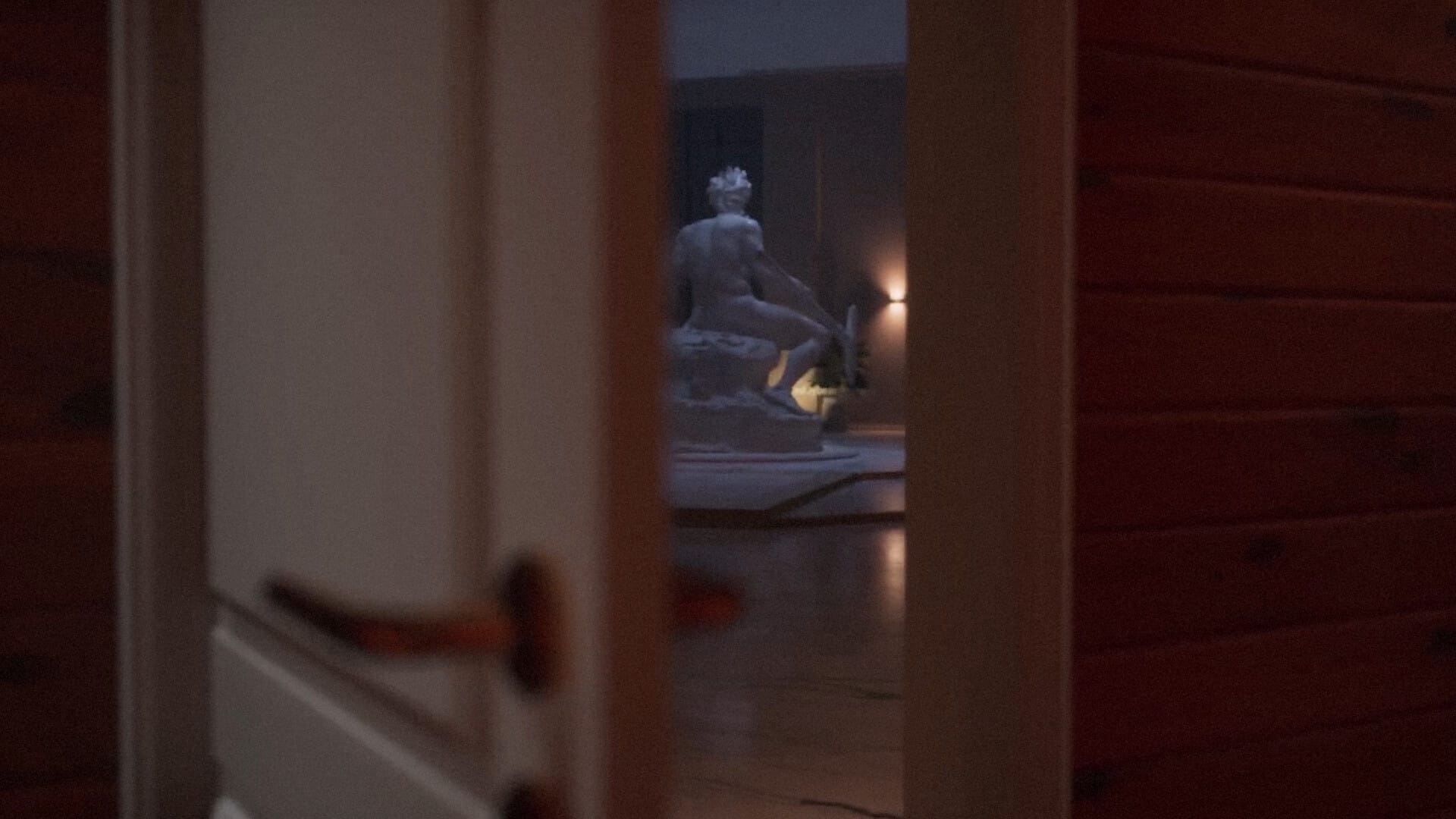
Dead Take is, by Surgent Studio’s own admission, a horror escape room. It’s not a survival horror game, nor is it a narrative “walking simulator.” You’ll read emails, watch clips, or write down a date, then apply that knowledge to complete a puzzle. The puzzles are simple enough—you won’t find a Blue Prince-style brainbreaker in Dead Take; instead, most of the puzzles require remembering a number sequence or deducing following a procedure step-by-step. Which also encourages the comparison to escape rooms (physical attractions that want to be solved), rather than, say, a serial killer’s SAW dungeon that only wants to deliver pain and death. Which is fine, but in an otherwise grim game about actors being ensnared by a mysterious Hollywood producer that’s out to own them, it’s hard not to think about the artifice of it all.
Movies, theater, and games are all fake, they’re typically premeditated works of art interested in telling a story driven by action or emotion. There are real humans behind the curtain making it all happen. That impactful scene of solitude on a remote island is filmed by a crew of tens or hundreds, the smell of catering wafting to the actor. But it doesn’t feel like that, because the cinematography, the acting, and the music all create an artifice that we want to believe. In great works, we forget that there’s a crew behind the scenes pulling the strings, that this was all to plan. We suspend our disbelief and just let it all wash over us.
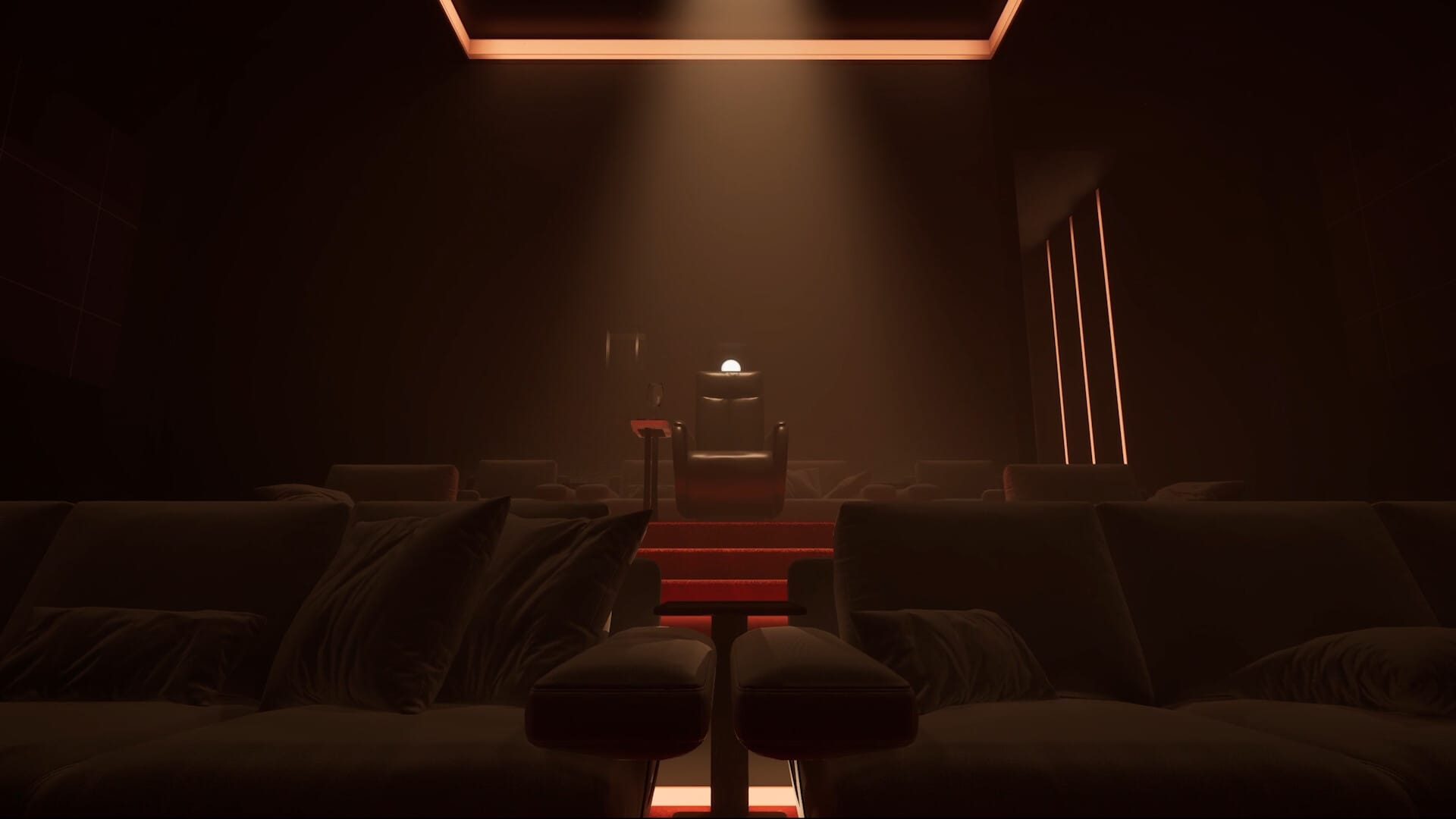
There’s a moment in the first half hour of Dead Take where you unlock the director’s theater and watch a few FMV clips of prominent characters. You then leave the theater to find the foyer lights off and a spotlight shining down on a baby crib covered in blood, a haunting music box lullaby emanating from the mobile slowly spinning off-kilter. It should be a chilling moment. That crib was not there a moment ago and there have been enough fullscreen image jump scares to make the house feel haunted. But, instead of being scared, I spend two minutes touring the room to see if I could spot the passage the escape room staff pulled the prop from.
I won’t say that this is a problem with the game. In fact, looking for the artifice in a game all about it is probably one of the only reasons I was able to keep playing. I don’t typically play horror games. Life is scary enough most of the time, I often steer clear of media meant to make my blood pressure rise, though I’m making a concerted effort to dig more into the space. Which is why I gave Dead Take a look; the horror elements seemed manageable enough for my scaredy-cat self and I love puzzles. I’m happy I gave it a shot because, while the game isn’t incredibly scary (that Ben Starr scene and one particular underground scene, notwithstanding), the puzzle box Surgent Studios made is fun to solve.
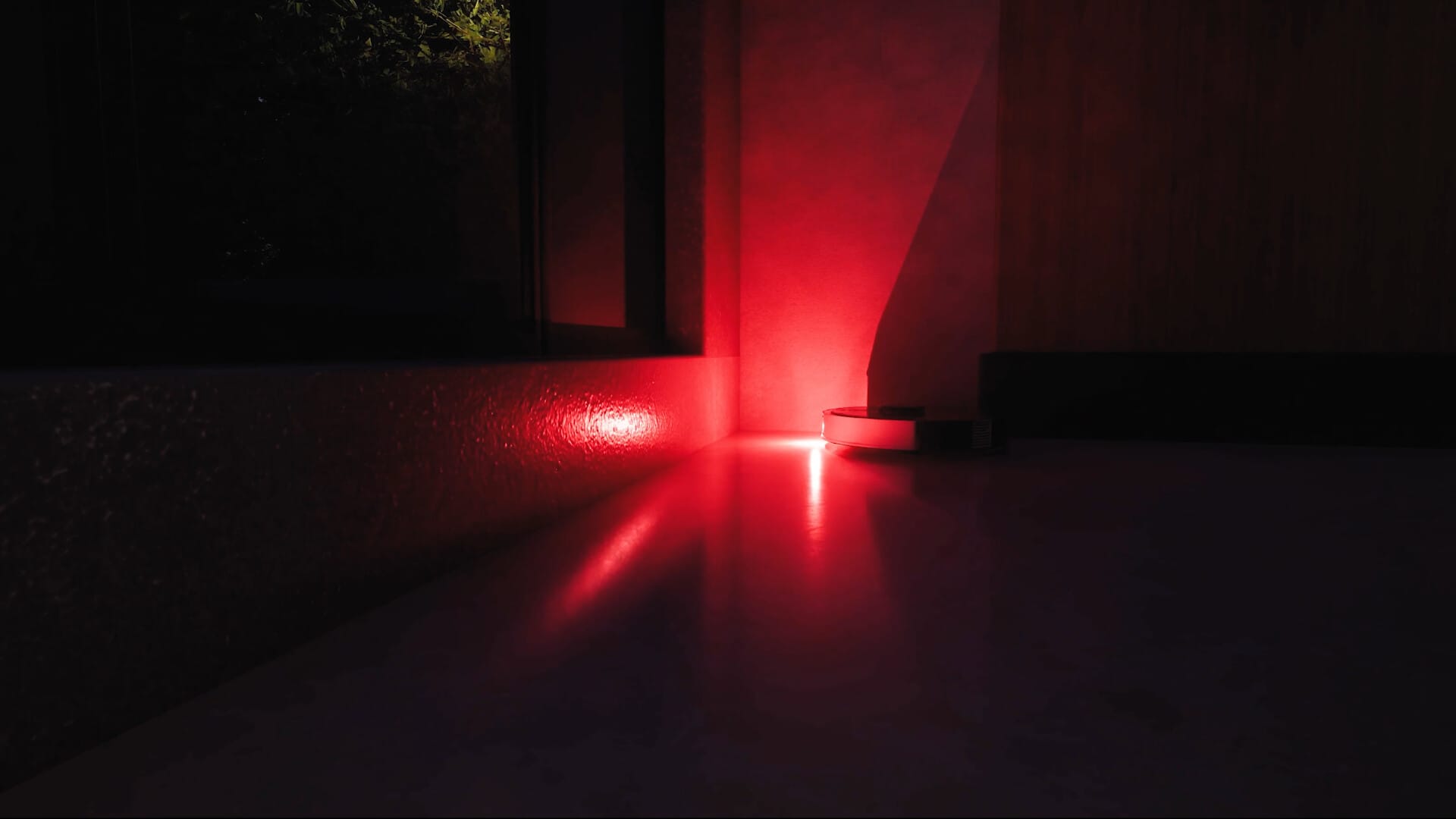
As the story develops, those escape room seams disappear. I stopped looking for trapdoors, and instead, I found myself engrossed in the relationships and motivations of the different actors, trying to sort out the backstabbing and blackmail. The world of Dead Take is grim and exploitative. It’s filled with flawed people who just want theirs, undercutting those around them for a leg-up. No one in Dead Take is above reproach, least of all you. The end of Dead Take is where it all comes together and the meta questions you’ve been asking yourself the entire time are answered. This is what I love about Dead Take: it literalizes its themes and shows that the puzzles you’ve been solving were all prelude to the real puzzle. You won’t be floored by the puzzles—it’s a rotten year to be a puzzle game in a mansion—but the mystery (and performances) are worth unraveling. Was Chase invited to the Mind Palace? You should play to find out.




